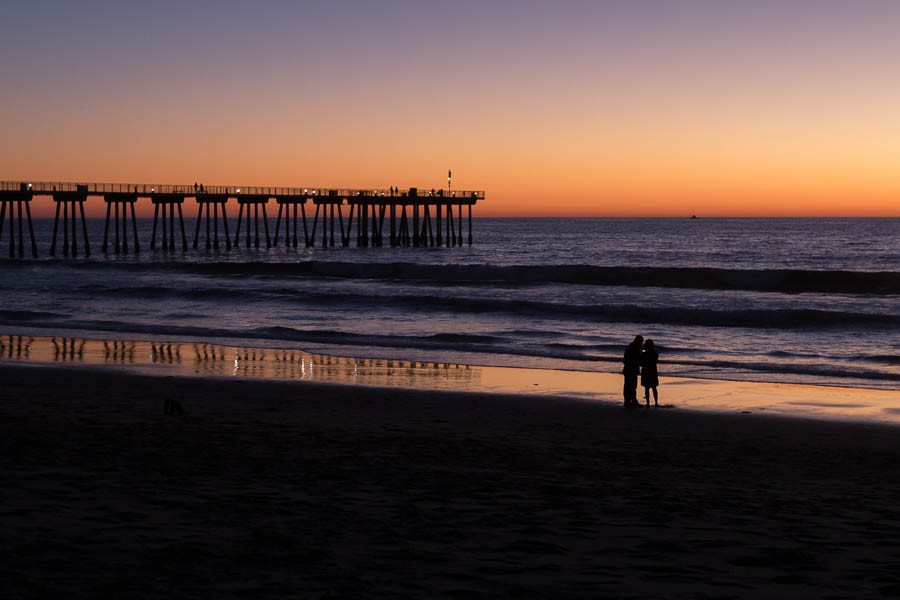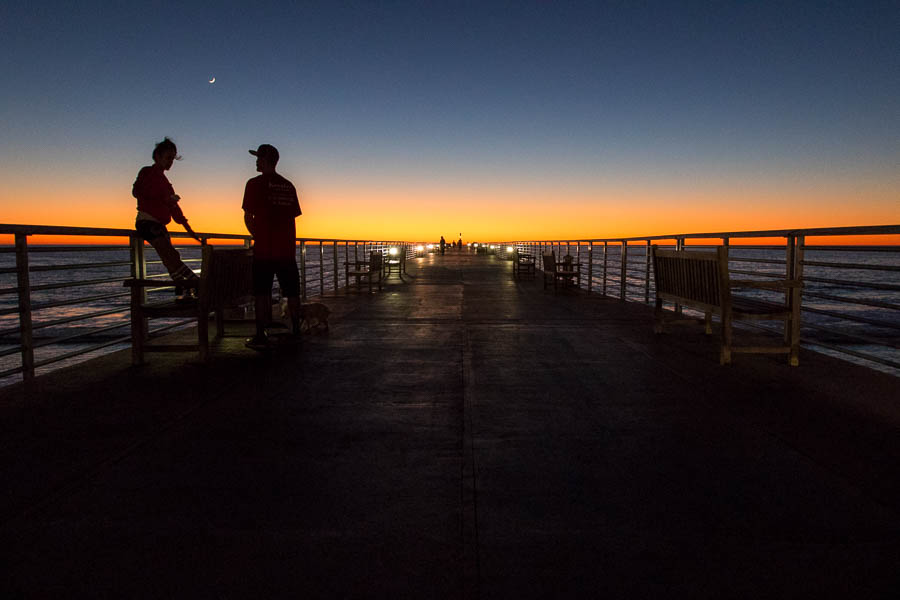I mentioned earlier today Aaron Gordon's evisceration of Uber's and Lyft's business model. It's worth a deeper look:
The Uber and Lyft pretzel logic is as follows: Drivers are their customers and also independent contractors but cannot negotiate prices or any terms of their contract. Uber and Lyft are platforms, not transportation companies. Drivers unionizing would be price-fixing, but Uber and Lyft can price-fix all they want. Riders pay the driver for their transportation, not the platforms, even though the platforms are the ones that set the prices and collect the money and allocate it however they want, often such that the driver does not in fact receive much of the rider’s fare.
There is a version of Uber and Lyft that might be profitable even if drivers are employees, but it is a much humbler one. It is one that uses the genuine efficiencies of app-based taxi hailing—the very ones Uber and Lyft claim is their actual secret sauce other than widespread worker exploitation—to get a smaller number of drivers more customers for each of them.
Exactly. If Yellow Cab in Chicago had created an app to find and direct taxis, it would be just as good as Uber or Lyft, but it would cost consumers more to use because taxi fares are regulated. That would be OK by me.
I can't wait to see the effects of California Assembly Bill 5 on the two companies.
I want Wayne LaPierre to apologize, in person, to Alberto Romero:
The shooting left three people dead — including a 6-year-old boy — and 12 injured, local officials said. Authorities initially reported that 15 people had been hurt but amended the count early Monday morning. One gunman was killed by officers at the scene, Gilroy Police Chief Scot Smithee said.
In an interview with NBC Bay Area, Alberto Romero confirmed that his 6-year-old son, Stephen, had died. The boy’s mother and grandmother were also shot and injured, the news station reported.
“I lost my son,” Alberto Romero told the news station. “There’s nothing I really can do besides try to be with him until I can put him in his resting spot.”
Romero later added: “My son had his whole life to live and he was only 6.”
Decades of the National Rifle Association trying to sell as many guns as possible have led to this. And to every other mass shooting in the last 30 years. There have been 196 mass shootings in 2019 so far, or about one every day. And the fact that the United States is the only OECD country where this happens means that we can stop them from happening simply by adopting gun controls similar to every other country in the world.
Wayne LaPierre and his entire septic organization should be held liable for each and every one of these murders until he and the NRA are insolvent. And then they should be held liable some more.
In their ongoing battle with large Hollywood agencies, the members of the Writers Guild of America fired all their agents. Subsequently, they went through the usual May cycle of getting new jobs with hardly any difficulty. And this week, the Guild released an online platform to connect writers with jobs.
In a note to the membership, the Guild explained the platform:
Today the WGA is launching our Staffing & Development Platform, which provides valuable new tools to help connect writers with job opportunities in features and TV development. Over 600 producers, PODs, and companies have already registered and set up their profiles. Now, they’re ready to hear from writers like you.
With this new Platform, writers will be able to contact producers, PODs, and companies directly to apply for Open Writing Assignments (OWAs) and to request general meetings. At present, Current members will be able to submit for up to 3 OWAs and 10 general meetings each month. On the first of each month, these counts will be reset to 3 and 10, respectively, whether the previous month’s submissions were used or not.
The dispute revolves around "packaging deals" in which agencies sell studios a "package" of talent for a show or film. The studios pay the agencies a package fee, which the writers never get. In other words, instead of representing the interests of writers, these package deals profit the agencies at the expense of writers, because the agencies have an incentive to reduce writers' fees and increase the package fees.
Agencies still think they're going to come out on top, because of hubris and greed. But the WGA has shown in the past three months, and continues to show with the new platform, that they don't need agents as much as agents need them. In fact, they never have. But as Upton Sinclair said, "it is difficult to get someone to understand a thing when his salary depends on him not understanding it."
Queued up a few articles to read after work today:
Now, off to find food, then back to the mines.
I thought the weekend of Canada Day and the weekend before Independence Day wouldn't have much a lot of news. I was wrong:
- Ontario Premier Doug Ford (the brother of Rob Ford) cancelled Canada Day celebrations in Toronto*. (Imagine the Governor of Virginia or the Mayor of DC canceling the 4th of July and you've about got it.) Fortunately for the city, the Ontario legislature reinstated them.
- You know how I write about how urban planning can make people happier, healthier, and friendlier? Yah, this city in California is my idea of hell. I hope the developers lost all their money.
- In contrast, I learned of the Lil Yellow House while in Toronto, and the rap video the real-estate agent created to sell it. (It sold quickly, for C$500,000.)
- Apparently, my drinking gets me a B-. (80% of Americans drink 6.75 drinks per week or less; the top 10% drink 15.28 per week. This is the one B- I'm happy to have.)
- My alma mater recently published new research linking your email address to your credit score.
- Alabama prosecutors have brought charges for manslaughter against a woman who miscarried after getting shot. No, really. Because Alabama.
- Former President Jimmy Carter called out President Trump on the (alleged) illegitimacy of his election.
- The New Republic adds to the chorus of organizations surprised at what it actually took to get the Supreme Court to call bullshit.
- Ever wonder how often two bags of Skittles candy have the same proportions of flavors? No, me neither. But this guy did.
- Windows has a case-insensitive file system; Git is case-sensitive. Do the math.
- Um. That's not a pet bird.
*Those celebrations will be here, on the right, in this view from my hotel room yesterday:

A large number of articles bubbled up in my inbox (and RSS feeds) this morning. Some were just open tabs from the weekend. From the Post:
In other news:
And now, to work, perchance to write...
Writing for Medium, Scott Lucas paints a dismal picture of Tinseltown after 50 more years of climate change:
“With the exception of the highest elevations and a narrow swath very near the coast, where the increases are confined to a few days, land locations see 60–90 additional extremely hot days per year by the end of century,” one study concluded. Downtown Los Angeles could experience up to 54 days measuring 95 degrees or higher by 2100, a ninefold jump. By then, temperatures in Riverside could reach over 95 degrees for half the year.
“By the end of century,” the authors of the study found, “a distinctly new regional climate state emerges.” This climate includes a new, fifth season: a super summer, driving people indoors for weeks at a time, stressing the power grid with heavy demand for air conditioning, and wreaking havoc on agriculture and, by extension, the food supply.
Meanwhile, beaches in Los Angeles will be facing their own threats. Rising sea levels will attack the coast in at least two ways: inundating beaches and eroding cliffs. “Our beaches are compromised. Not just from overall sea level rise, but also coastal storm events,” says Lauren O’Connor Faber, the city’s chief sustainability officer.
In 2017, scientists modeled the effects of sea level rise on 500 kilometers of shoreline in Southern California. A sea level rise of 0.93 to two meters, they predicted, would result in the loss of 31 to 67 percent of beaches in Southern California, including some of its most well-known. A separate USC study concluded, “In Malibu, both low and high sea level rise scenarios suggest that long segments of beach will essentially disappear by 2030.”
So this could be a thing of the past during my lifetime:

A couple of news stories have dogged me this week.
First, the TSA has determined that travelers—particularly children—find floppy-eared dogs less threatening than pointy-eared dogs:
TSA Administrator David Pekoske said the agency is also making at least one new change to reduce traveler stress: deploying more floppy-ear dogs, rather than pointy-ear dogs, to sniff out explosives in public areas.
During a recent tour of Washington Dulles International Airport, Pekoske told the Washington Examiner that his agency believes floppy-ear dogs are less intimidating to travelers than dogs with pointy ears.
“We find the passenger acceptance of floppy-ear dogs is just better,” he said. “It presents just a little bit less of a concern. Doesn’t scare children.”
The agency says it trains seven breeds of dogs: German shepherds (pointy ears), Labrador retrievers (floppy ears), German shorthaired pointers (floppy ears), wirehaired pointers (floppy ears), Vizslas (floppy ears), Belgian Malinois (pointy ears) and golden retrievers (floppy ears).
Because of the federal shutdown, TSA representatives could not be reached to comment on how the agency will transition to more floppy-ear dogs.
Parker approves.
Meanwhile, a new California law taking effect tomorrow allows divorce judges to take into account the best interests of family pets, rather than just treating pets as personal property as has been the law since time immemorial:
The law was sponsored by dog owner and state Assembly member Bill Quirk and signed by dog lover Gov. Jerry Brown (Lucy, a borgie, is the state's first dog and Cali, a bordoodle, is the first deputy dog). The measure empowers judges to consider "the care of the pet animal" and create shared custody agreements.
The law "makes clear that courts must view pet ownership differently than the ownership of a car, for example. By providing clearer direction, courts will award custody on what is best for the animal," Quirk said after the bill was signed.
Legal experts said the law means judges can take into consideration factors like who walks, feeds and plays with the pet when deciding who the animal should live with.
Now, I'm pretty sure pets are still personal property under the law, and won't get treated like people. But who's a dog-friendly state? Who's a dog-friendly state? Is California a dog-friendly state? Yes it is! California is a dog-friendly state! Good legislature! Good governor!
...not everywabone would look like these guys, getting in a few waves just past 9 in the morning today:


These are just some quick edits on my Surface. When I get home I'll spend some more time with the few hundred photos I've taken today and yesterday.
Two from last night, near the Hermosa Beach Pier:

